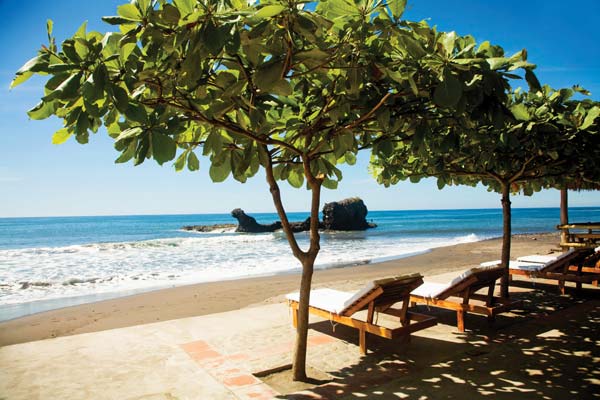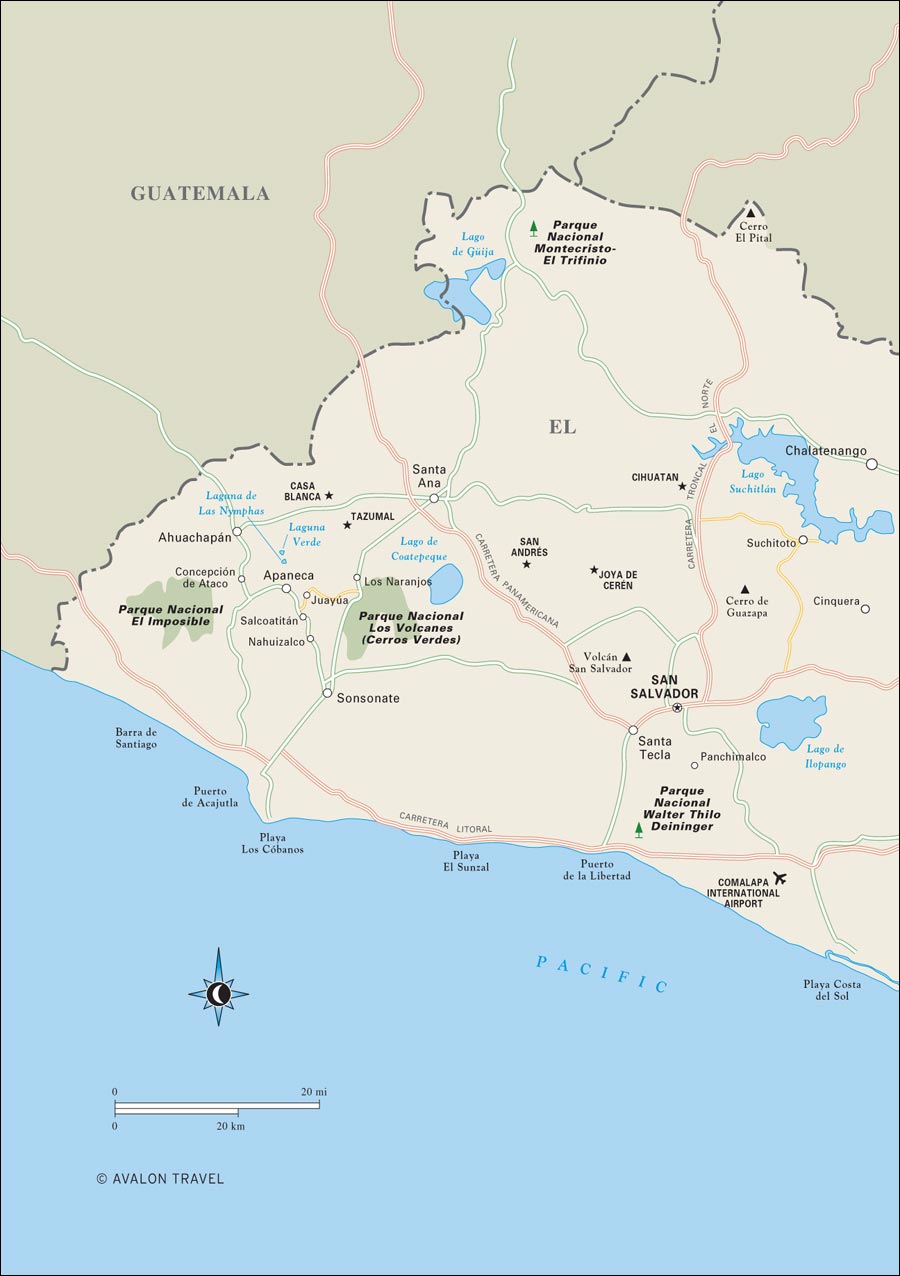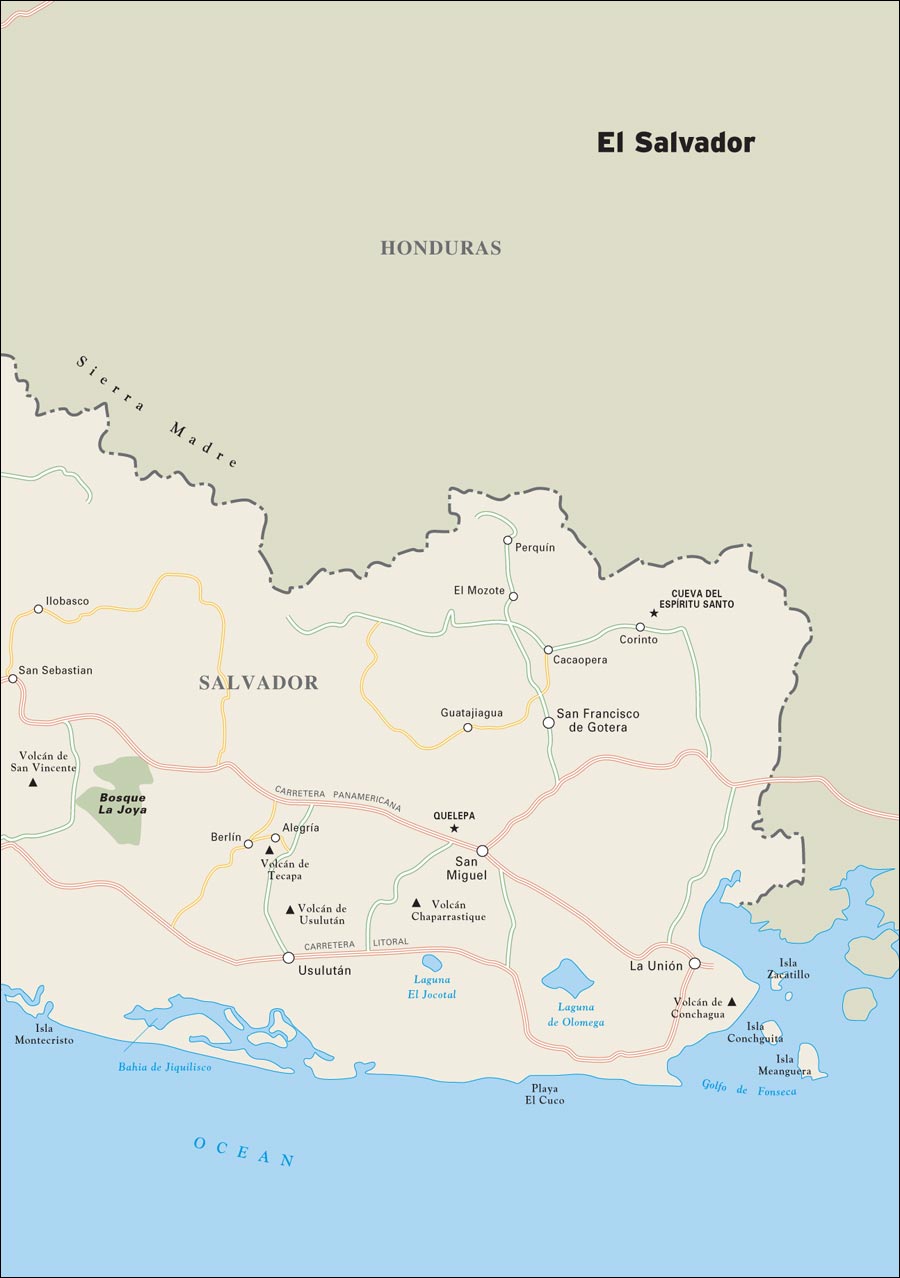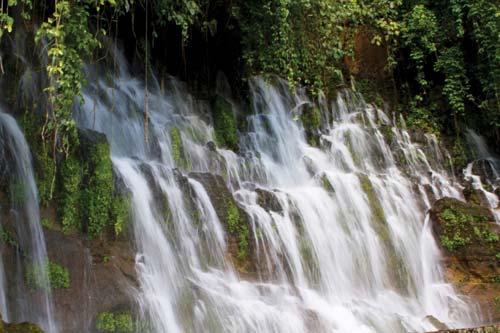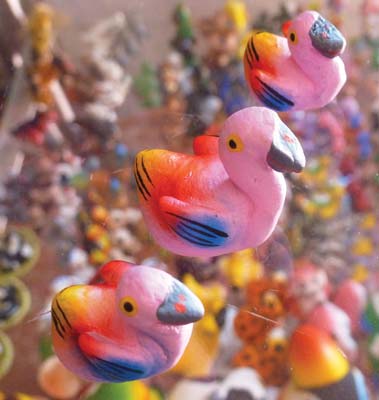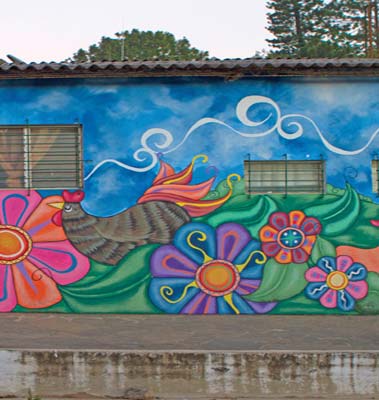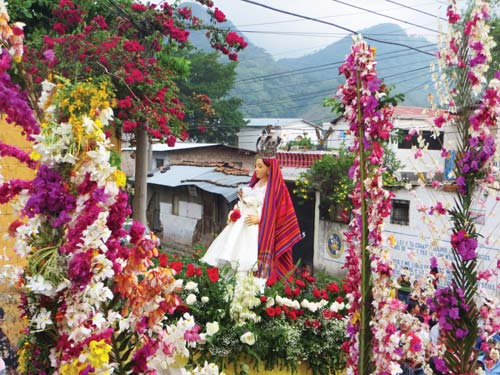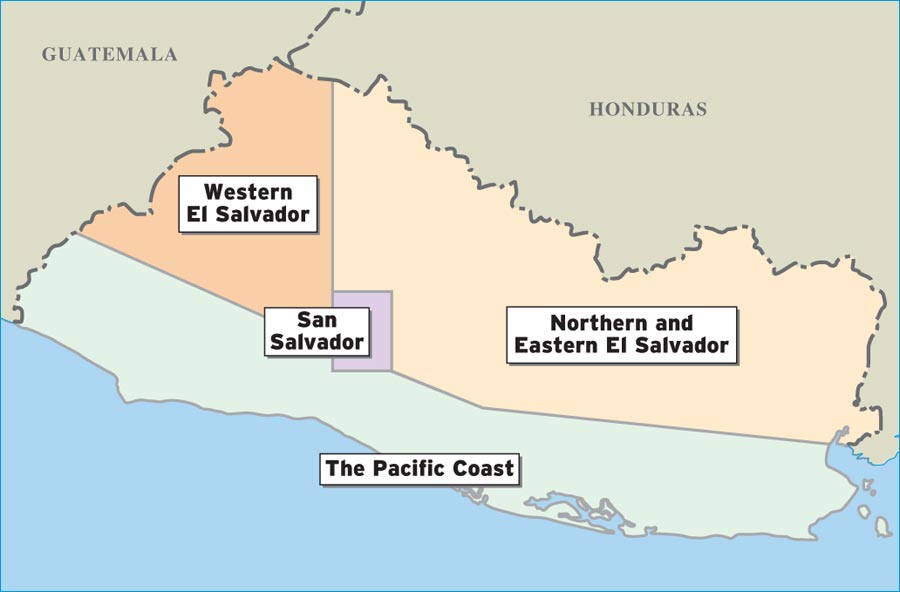EL SALVADOR
JAIME JACQUES
If wealth were measured in kindness, El Salvador would be the richest country in the world. This tiny place with a big heart is famous for softening even the most hardened cynics, and showing them a damn good time while its at it.
Until recently the only people passing through were intrepid backpackers and devout surfers. But it was only a matter of time before the secretive whispers about crystal green lakes, misty cloud forests, and mysterious ruins got out. Throw some of the best surf breaks in the world into the mix and El Salvadors a hidden gem thats soon to be discovered.
Volcano hikes, national parks teeming with birds and butterflies, and a rugged Pacific coastline dotted with secluded getaways make this country an outdoor enthusiasts dream. But by far, El Salvadors most valuable asset is its people. Hard-working and fast-talking, Salvadorans always have time to help someone in need. The country seems to run on the perfect balance of play and productivity. Perhaps it is the many and varied hardships the people of this land have endured that has taught them that life is too short to be taken too seriously. If you ask a Salvadoran where something is, you may be offered a ride, asked to join a meal, then be offered half the plate. And if somebody invites you over to their home, chances are you will have a forged a friendship for life.
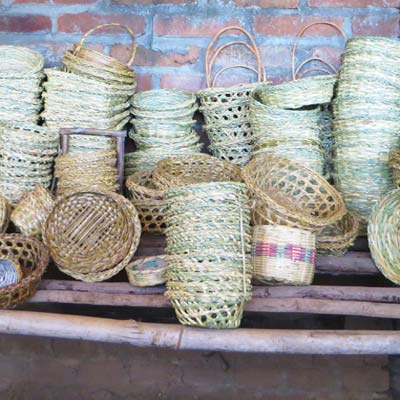 |  |
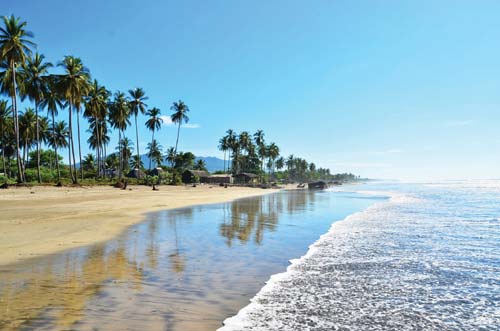
The land of El Salvador is as colorful as the people. The abundance of volcanoes lends it a mythical appeal; flowering trees pepper the landscape with orange, lavender, and fuchsia hues; and the diverse coastline offers huge waves, surreal estuaries, and expansive white-sand beaches. El Salvador is the smallest country in Central America, making it possible to take a morning hike in the cool northern mountains, eat fresh seafood on the beach for lunch, and then shimmy the night away at a salsa bar in San Salvador.
Unfortunately, many people exploring Central America opt out of El Salvador, scared off by reports of violence and crime. Yes, gang activity is high, but its also localized in terms of where and who is targeted. Incidents involving visitors are extremely rare. The El Salvador you hear about in the news and the El Salvador you are about to discover are two very different places. Leave your preconceptions at the border, expect the unexpected, and prepare to be pleasantly surprised.
San Salvador
San Salvador sits in a fertile valley and has a history as eruptive as the volcanoes that surround it. The churches and plazas of the Centro Histrico all have stories of protest and revolution. The museums, restaurants, and bars of Zona Rosa are perfect for an afternoon of art and culture, and day trips to the natural attractions of Parque Nacional El Boquern or Puerta del Diablo are just a quick drive to the outskirts of the city.
Festival de las Flores y Palmas procession in Panchimalco, near San Salvador
Western El Salvador
Just west of San Salvador, the scenic rolling Ruta de Las Flores takes you through the Sierra Apaneca-Ilamatepec mountain range, punctuated with charming little towns including Juaya, home of El Salvadors most popular weekend food fair and Concepcin de Ataco, the colorful cobblestone village. Parque Nacional Los Volcanes (Parque Cerro Verde) is where you can climb volcanoes, including Izalco and Santa Ana. Nearby Lago de Coatepeque is one of the largest crater lakes in the country, and the ruins of Tazumal in Chalchuapa are just a short bus ride from El Salvadors second-largest city, Santa Ana.
The Pacific Coast
With just over 300 kilometers of Pacific coastline, theres something for everyone on the beaches of El Salvador. The western coast offers several world-class beach breaks for surfers, and the bustling backpacker hub of Playa El Tunco is the perfect base from which to explore them all. Farther west, the remote Barra de Santiago is a peaceful escape with mangroves and bird-watching. The east coast also offers top-notch surfing at Playa Las Flores and Punta Mango, or sunbathing and swimming at Playa Maculis or Playa Estern. The more adventurous can continue east to the Bajo Lempa region, where the Ro Lempa meets the Pacific Ocean. Here, Baha de Jiquilisco and Isla Montecristo offer community-based ecotourism and opportunities to release baby turtles. Finally, the rugged undeveloped islands in the Golfo de Fonseca offer remote beaches and spectacular views.
Northern and Eastern El Salvador
The first Spanish settlement in El Salvador, Suchitoto still shows its colonial roots, with cobblestone streets and crumbling century-old homes. The nearby ruin of Cihuatn is the largest pre-Hispanic site found in the country, and farther north the whimsical town of



